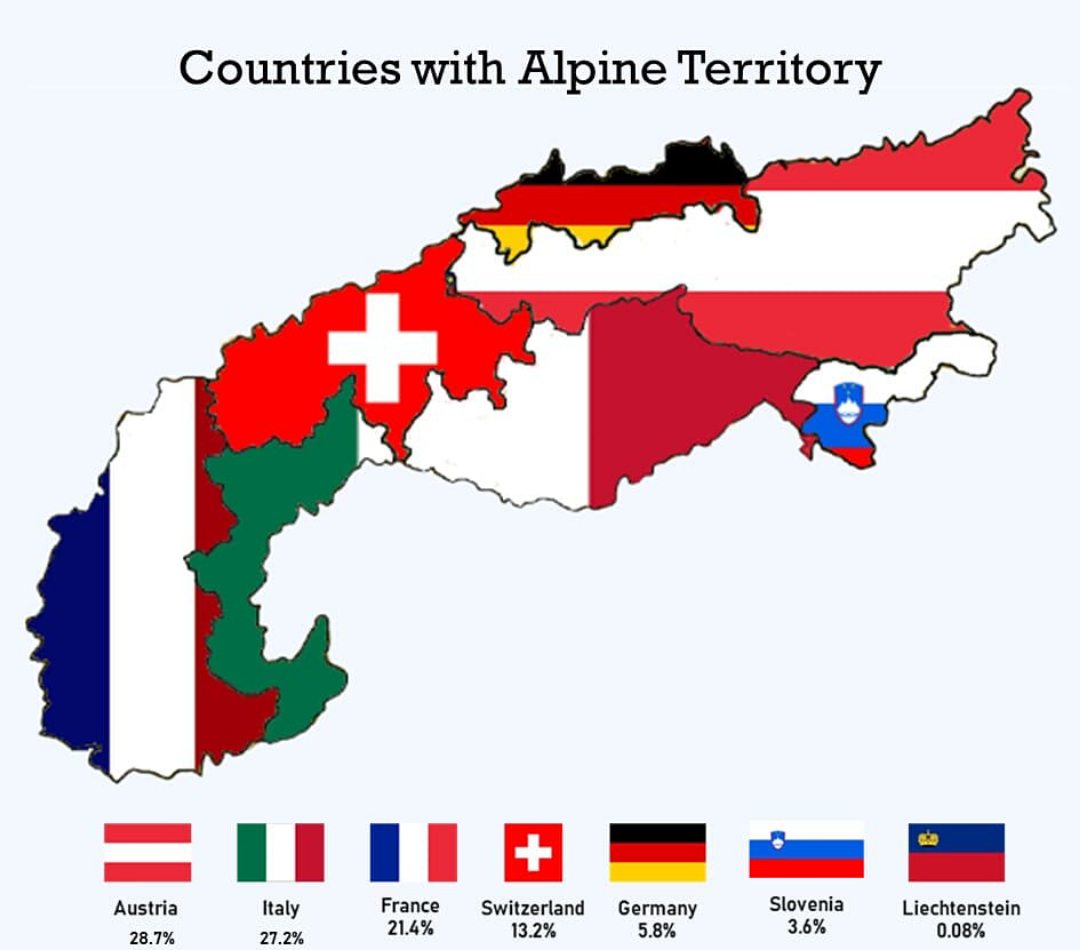Countries with Alpine Territory Map


Marcus Rodriguez
Historical Geography Expert
Marcus Rodriguez specializes in historical cartography and geographic data analysis. With a background in both history and geography, he brings unique...
Geographic Analysis
What This Map Shows
This map provides a visual representation of the countries that possess alpine territories, highlighting regions characterized by mountainous landscapes often found above a certain altitude. These areas are typically rich in unique ecosystems, breathtaking scenery, and diverse climatic conditions. Alpine regions are not just significant for their beauty; they also play a crucial role in the environmental and economic landscapes of the countries they inhabit.
Deep Dive into Alpine Territories
Alpine territories are fascinating environments that exist primarily in mountain ranges around the world. They are defined by their high-altitude ecosystems, where the climate becomes cooler and conditions can be extreme. The term 'alpine' specifically refers to the zone of life at high elevations, which can vary depending on geographical location. Generally, this zone is characterized by rugged terrain, steep slopes, and varied vegetation that can include alpine meadows, rocky outcrops, and glacial formations.
Interestingly, the Alpine climate varies greatly between regions. For instance, in the European Alps, the weather can shift dramatically from sunny to snowy in a matter of hours due to the influence of Atlantic weather systems. Meanwhile, the Andes in South America face different climatic influences, where the rain shadow effect creates arid conditions on one side and lush, biodiverse ecosystems on the other.
One of the most intriguing aspects of alpine environments is their biodiversity. These regions are home to unique plant and animal species adapted to survive in harsh conditions. For example, the Alpine ibex, a wild goat, is well known for its climbing skills on steep cliffs, while the Edelweiss flower is a symbol of the Alps. The high-altitude zones also serve as important water reservoirs, as they contribute to river systems through glacial melt.
Did you know that alpine regions are also highly sensitive to climate change? Rising temperatures can lead to glacial retreat, altering the delicate balance of ecosystems and affecting water supply for millions of people downstream. This makes the study of alpine territories critical, as they can serve as indicators of broader environmental changes. The preservation of these areas is essential not only for their biodiversity but also for the communities that rely on them for resources.
Regional Analysis
Looking at the map, it's clear that Europe, North America, and Asia are the primary continents with notable alpine territories. The European Alps, stretching across eight countries including Switzerland, France, and Austria, are perhaps the most famous alpine region, known for their skiing resorts and picturesque villages. The highest peak, Mont Blanc, stands at 4,808 meters, attracting tourists and climbers from around the globe.
In North America, the Rocky Mountains boast extensive alpine areas, particularly in the U.S. states of Colorado and Wyoming. The unique geology of the Rockies creates a diverse range of habitats, from subalpine forests to alpine tundra, each supporting distinct wildlife and plant communities. The Canadian Rockies, with their stunning landscapes and national parks, are also significant alpine regions.
Asia's contribution to alpine territories is highlighted by the Himalayas, the highest mountain range in the world. Countries like Nepal, Bhutan, and India feature not only breathtaking peaks like Mount Everest but also rich cultural histories deeply intertwined with these mountains. The Tibetan Plateau, often referred to as the 'Roof of the World,' is another significant high-altitude area that influences climate patterns across Asia.
Significance and Impact
The significance of alpine territories extends beyond their aesthetic appeal. These regions are vital for water supply, as they store and release water that supports agriculture and drinking supply for millions. They also play a key role in tourism, with many alpine areas relying heavily on outdoor recreation industries, including skiing, hiking, and mountaineering.
However, the challenges posed by climate change are pressing. As temperatures rise, the melting of glaciers threatens both local ecosystems and the water supplies of countries downstream. Additionally, increased tourism can lead to environmental degradation. Protecting these alpine areas is crucial for maintaining their ecological health and the livelihoods of communities that depend on them.
In conclusion, alpine territories are not merely beautiful landscapes; they are complex ecosystems that require careful study and protection. Understanding their importance is vital as we face environmental challenges and strive for sustainable development in these unique regions. What's fascinating is how interconnected these alpine systems are with global climate patterns, making them essential for not only local but also international environmental health.
Visualization Details
- Published
- August 19, 2025
- Views
- 134
Comments
Loading comments...